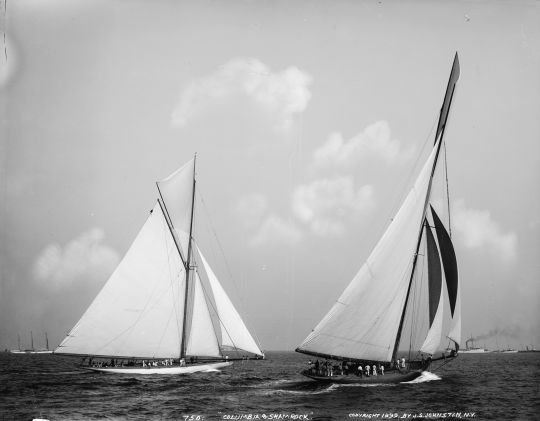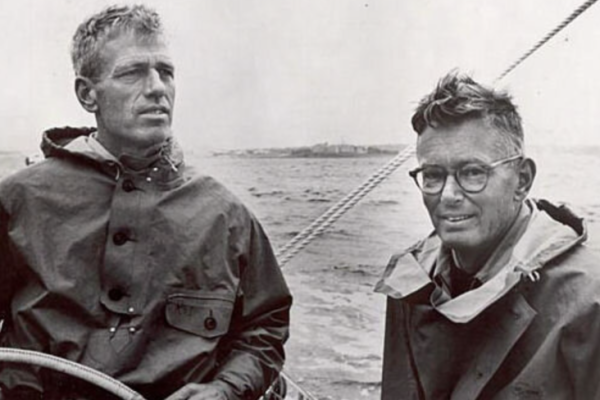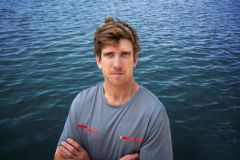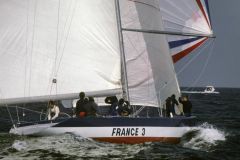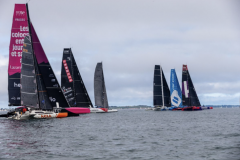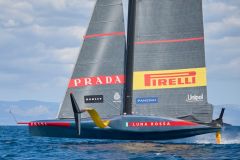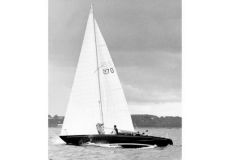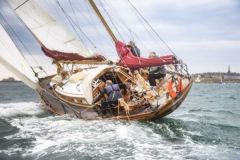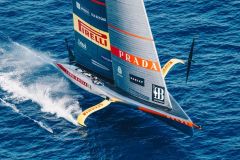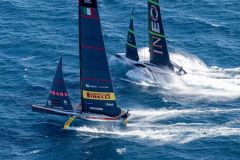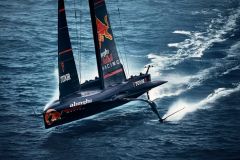An apprenticeship on his father's boats
Sparkman & Stephens was founded in 1929 by Olin and Rod Stephens in partnership with Drake Sparkman. The Stephens discovered sailing as children when their father bought a 5 m sloop named Corker. None of them had ever sailed before. Year after year, they spent their summers sailing on ever-larger boats. Olin studied naval architecture, but eventually decided to give it up to apply what he had learned directly.
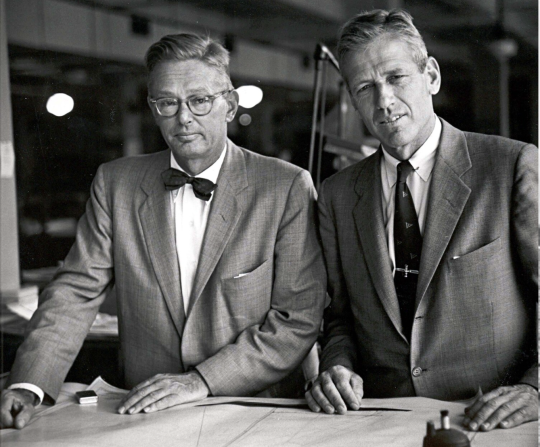
A first plan that will leave a lasting impression
Olin Stephens drew his first design before the age of 20. It was published in the January 1928 issue of Yachting magazine. His father, aware of his son's talent, decided to introduce him to Drake Sparkman. He was looking for a naval architect to expand his business. He decided to found the present naval architecture firm in 1929. Rod, for his part, was not at ease in the classroom either. He decided to train in boatbuilding, joining the Nevins shipyard in 1928. Here he acquired all the experience needed to build a boat.
The beginnings were difficult, but it was a commission from Olin's father, Roderick Stephens, that tipped the balance. He and his sons had long imagined what the perfect ocean racing boat would be. In the early '30s, ocean racing was new, and boats built from traditional schooners were not cut out for it. So Olin designed Dorade, a yawl measuring 15.85 m overall, 11.90 m waterline, 3.20 m beam and 2.44 m draft. This layout differs from that seen on the water at the time. The sail plan is smaller, and the ballast is greater to compensate for the reduced beam.
Dorade made his debut in the 1930 Bermuda Race, skippered by Olin, his brother Rod and their friends. He finished second in the B class and third in all categories. Despite his outstanding performance, Olin was a little disappointed. The following year, for the Transatlantic race, Dorade set sail again with a modified rig. The bowsprit was removed. For this race, the brothers took a different route from their rivals, rounding Cape Lizard two days before their nearest competitor. As Olin points out, a moderate displacement, medium beam boat is the ideal combination for offshore racing.
A few weeks later, Dorade won the Fasnet, the 1932 Bermuda Race and the Fastnet again the following year. Rod, who skippered the boat for the season, won the Blue Water Medal at the age of 24. These successes put Olin on the map, and he began designing boats of all kinds for various owners.
At the same time, Rod built several boats, including an 18-m schooner, Brillant, which set a record in 1933. She crossed the Atlantic from Block Island in the northern United States to the English island of Bishop Rock in 15 days and 23 hours.
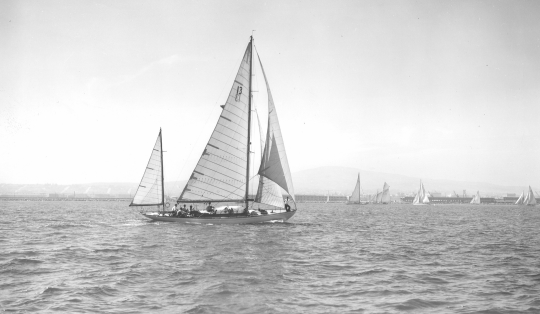
Undisputed America's Cup victories
But it was an even greater challenge that would make the Stephens brothers part of history. Harold S Vanderbilt entrusted his new America's Cup project to the Stephens brothers, following two earlier J-Class designs by W. Starling Burgess in 1930 and 1934. The two architects joined forces to create this new boat. The team took naval architecture into a new sphere by carrying out hull tank tests. Tests which, had they not been carried out, would never have brought Ranger to life, so different was the model from the current standard.
Ranger was the largest J-Class ever built, 130 feet long, with aluminum-alloy mast, boom and rig, a brand-new material for which there was no experience. It got off to a disastrous start. As Ranger sailed from Bristol to the Herreshof shipyard in New York, her mast broke. With the America's Cup just a few weeks away, the experts estimate 6 months of work. But Vanderbilt wants to win the Cup and does everything in his power to repair his boat. Parts of the rigging are recovered from Rainbow, the second J-Class designed for the 1934 Cup. Ten days later, Ranger is fitted with a provisional rig, pending a new aluminum mast manufactured in 3 weeks.
Under sail, Ranger proves to be the fastest J-Class ever built. Unbeatable in heavy weather, she also won in light breezes. It won the 1937 America's Cup, winning all 12 legs of the regatta. In the process, he became a sailing legend.
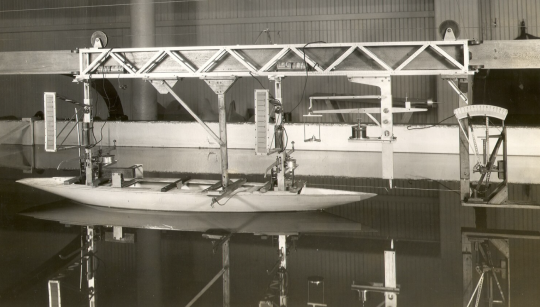
An aside for the U.S. Navy during World War II
In 1939, Harold Vanderbilt once again recruited the Stephens brothers to design a 12-meter called Vim. It won everything in its first season. But the war changed everyone's plans. Olin and Rod built PT-Boats and tankers, but also amphibious landing craft for the U.S. Navy. This amphibious truck, developed by Rod, was built in 30,000 units, enabling the brothers to continue their business after the war.
A return to ocean racing
Olin designed a new sloop for the 1958 America's Cup, now contested in 12m JI. Columbia won 4 consecutive races. For the 1964 Cup, Olin designed Constellation, one of the best boats in its class. For four decades, S&S designed all but one of the America's Cup winners. That was Valiant, in 1970.
In addition to the America's Cup, the firm designed one of the most famous offshore racing boats of its time, Finisterre. She was 11.70 m long, 8.35 m at the waterline, with a 3.60 m beam and a 1.20 m draft. She was the only boat to win the Bermudas three times.
In 1978, Olin Stephens left the company that bears his name, having designed over 2,000 boats. He died in 2008 at the age of 100.
